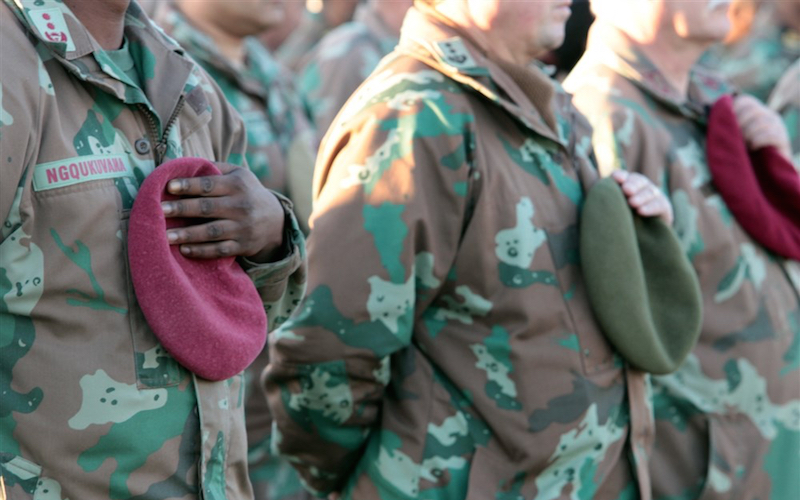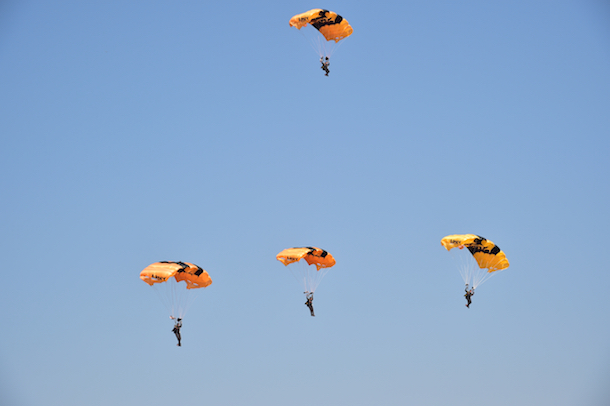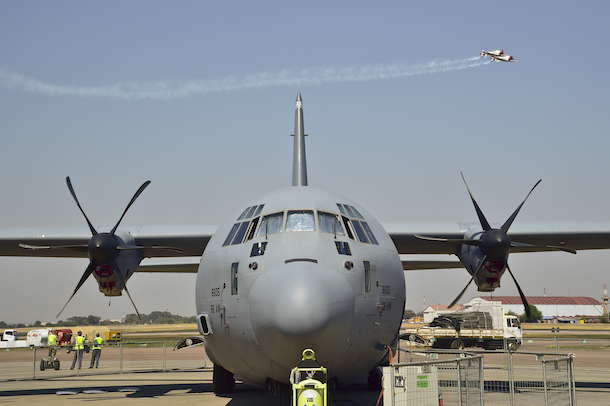
South Africa and Africa’s Place in America’s Security Strategy
According to the White House, the 2015 National Security Strategy (NSS) “is the blueprint for America’s leadership in the world — how we address global challenges while advancing our nation’s interest, values, and vision for the future.” For those who follow politics and international relations, it is an important document, one we have been anticipating for a long time.
This is President Obama’s second NSS and was expected back in 2013 as a scene-setter for his second term, but as most observers have noticed, a frequently changing world makes it difficult to write a document about the current global landscape and its future.
The NSS is broken down into sections like strengthening national defence, combating terrorism and preventing the spread of weapons of mass destruction. However, it goes beyond this by discussing the global economic crisis and how to respond to an array of emerging economic and political challenges. It rightfully examines economic growth and stability and its impact on security.
Its overarching theme is that America must lead with purpose, lead with strength, lead by example, lead with capable partners, lead with all the instruments of US power, and lead with a long-term perspective.
The NSS is one of many policy documents that pertain to America’s actions overseas. The State Department’s US Strategy towards Sub-Saharan Africa released in June 2012 was a much needed, comprehensive document highlighting America’s growing focus on Africa. Like the NSS, it discusses security. When you read the two together and then go back 20 years, wow, what a difference time can make.
U.S. Security Strategy for Sub-Saharan Africa, a report published by the US Department of Defense in August 1995 stipulated: “America’s security interests in Africa are very limited. At present we have no permanent or significant military presence anywhere in Africa: We have no bases; we station no combat forces; and we homeport no ships. We do desire access to facilities and material, which have been and might be especially important in the event of contingencies or evacuations. But ultimately we see very little traditional strategic interest in Africa.”
The 2015 NSS does frequently discuss the Middle East and North Africa (MENA) for obvious reasons. However, in the 2015 edition, Africa below the desert has its own section entitled “Invest in Africa’s future.”
The Centre for Research on Globalization based in Canada analyzed the NSS soon after its release in February. It concluded: “The most detailed strategy outlined in the document is for the US’ hyper engagement with Africa, which is envisaged as having both economic and military components.”
Ending extreme poverty is a key objective in the NSS. It uses sub-Saharan Africa as an example of how a region is growing despite the global challenges: “sub-Saharan Africa has averaged an aggregate annual growth rate of over 5 percent for the last decade despite the disruptions of the world financial crisis.” The document also elaborates on how America plans to reduce inefficiencies in the global trading system through improving trade and expanding development initiatives such as Power Africa, Trade Africa, Feed the Future, and the Open Government Partnership.
The document continues: “[the goal is to] continue to work closely with governments, the private sector, and civil society to foster inclusive economic growth, reduce corruption, and build capacity at the local level. Investment in critical infrastructure and security will facilitate trade among countries, especially for developing and emerging economies.”

Militarily, the US wants to “strengthen the operational capacity of regional organizations like the African Union (AU) and broaden the ranks of capable troop-contributing countries, through the African Peacekeeping Rapid Response Partnership, which will help African countries rapidly deploy to emerging crises.”
Lastly, and arguably the most important factor for the future of Africa, the NSS mentions demographics and how the young people of the world will play a crucial role in shaping the future. “More than 50 percent of the world’s people are under 30 years old. Many struggle to make a life in countries with broken governance. We are taking the initiative to build relationships with the world’s young people, identifying future leaders in government, business, and civil society and connecting them to one another and to the skills they need to thrive. We have established new programs of exchange among young Americans and young people from Africa to Southeast Asia, building off the successes of the International Visitor and Young African Leaders initiatives.”
South Africa’s role
Launched during Obama’s visit to our country in 2013, South Africa has been one of the big focuses of his Young African Leadership Initiative better known as YALI. South Africa hosts one of the four Regional Leadership Centres. The Centre aims to expand and improve leadership training programs and professional development opportunities for young leaders. The Centre has an education alliance led by the University of South Africa, with support from the University of Pretoria. Another key component of YALI is the Mandela Washington Fellowship where dozens of young South Africans are sent to the US for a six-week program at one of 20 American universities followed by a conference in Washington, DC hosted by Obama.
There are other lesser-known bilateral youth programs between Pretoria and Washington. The US Embassy in Pretoria through their Office of Defense Cooperation sends, on average, three young South Africans aged 17-23 every year to study at the top 10 engineering schools in America.
Everything is fully funded for four years and the only condition is that the recipients return back to South Africa after their studies and work for Armscor or any other component of the government with preference going to defence organisations. In 2013, one young South African returned from the US Naval Academy to serve as an ensign in the South African Navy. One student is currently enrolled in the US Air Force Academy.
South Africans visiting the US and vice versa, as well as cooperative military training between both countries has been the norm for some time now. Most recently, in March 2015, one of the South African Air Force (SAAF)’s top commanders made a four day visit to New York to get a better idea of how the New York Air National Guard operates. The South African military has had a State Partnership Program with the New York National Guard since 2004. In fact, it was a New York Air National Guard C-17 Globemaster III on display at the recent African Aerospace and Defence exhibition and air show at Waterkloof AFB in September.
Africa is where the US and South Africa have almost always (forget Libya for a second) seen eye to eye in terms of peace and security. This is where interests overlap. America’s reasons to be involved are no real secret. There is a need to suppress terrorism, protect strategic oil and mineral resources, and give balance to China’s growing role. South Africa needs a peaceful SADC with growing economies to increase trade relations. South Africa needs stability to avoid an influx of both legal and illegal immigrants. It also feels it has to be ‘present’ in one way or another to assist its African brothers because South Africa is the regional leader.
Officially, the four main responsibilities of the SANDF are to: to defend and protect South Africa, to safeguard its borders and infrastructure, to promote peace and security in Africa, and to perform developmental and other tasks assigned to it. This is easier said than done and the SANDF is stuggling to keep up.
Having frequent interaction with SANDF personnel, I hear stories of some serious complications unfolding within the military. Lack of operational aircraft and frequent delays in programmes are just two of many issues. One grave concern is leadership. Having political leaders on top of the military chains of command are definitely not the same as conventional military leaders who grew up from the grassroots level. Many of these politicians, some of whom have emerged from the struggle against apartheid, find it difficult to understand that the “struggle” is over, and now all hands must be on deck to run a democracy. Furthermore, I have been led to believe that there has been a constant and rapid dilution of professionalism in all spheres of the SANDF over the past 15 years or so, except for some pockets of excellence at the unit level.
This decay has been attributed to hastily and incorrectly planned efforts at “transformation” leading to a breakdown in morale, cohesiveness and administration, which makes the decay curve even steeper. This is combined with an alleged disconnect between the “orderers” and the “ordered,” with only a one-way communication – downwards. The “ordered” are expected to do more and more with less and less.
These stories correlate with news reports of a Defence Force in complete disarray. Dawn Nagar recently discussed the status of the SANDF for the Sunday Independent. Nagar writes: “The government has inadvertently created an overly stretched and underfunded defence force, affected by the lack of training and maintenance operations. Such inadequacies have placed the country’s peacekeeping operations at risk.”
What peacekeeping operations you might ask? South African troop deployment was extended at the end of March in the Democratic Republic of Congo (DRC), the Southern African and Indian Ocean coast, and Sudan until 31 March 2016. This includes 1388 SANDF troops in the DRC, 220 for anti-piracy operations along the coast, and 850 in Dafur, Sudan. At the same time, SANDF defended its decision to acquire additional aircraft for President Zuma and his cohort costing about R2 billion. SANDF confirmed the budget for these jets was initially meant for other equipment such as new transport aircraft for the South African troops, which is something the SANDF desperately needs…cough cough…for the peacekeeping commitments just mentioned.

A report from last week indicates the SAAF is keen on acquiring the C-130J model from the American company, Lockheed Martin, to replace its aging C-130BZs. The C-130 is seen as a key component of South Africa’s medium lift capability, which is important if it wants to be a major player in the region. Many have argued, however, that this is not the right aircraft if South Africa wants to participate more in peacekeeping operations. Overall, the SAAF appears to be vacillating over the choice of a transport aircraft. This is likely due to vested interests, inconsistency of thought amongst the leadership, ignoring the advice of subject matter specialists and unclear long-term perspectives.
C-130s or C-17s involve serious cash, so where is all this money coming from? South Africa’s economy is declining for multiple reasons and running a military is not cheap.
In “Who will keep the peace?” Dawn Nagar explains how the South African government and the SANDF are supposed to deal with this sharp downward defence trajectory as per recommendations in the 2014 SA Defence Review. Firstly, SANDF needs to deal with operational problems and a minuscule budget of 1.1 percent of gross domestic product (GDP), which equates to R44 billion. It needs to take incremental steps over the next 30 years: 2 percent of GDP to handle current missions, 2.4 percent for new challenges, 3.3 percent to deal with war. All of this is, of course, is dependant upon having qualified and educated personnel located within the ranks.
The SANDF getting ‘more and more’ money appears unlikely. Combined with the issues discussed earlier, this may ultimately mean limiting South Africa’s involvement in peacekeeping operations.
South African leadership needs to decide if it wants be a regional military player or not? If you analyze the official speeches the answer is ‘yes.’ However, this can easily turn into another example where South African rhetoric doesn’t match the on the ground reality. Despite SANDF’s problems, do expect the military and political leadership to continue to travel the world for official visits.
How much more the US and South Africa will cooperate on defence will depend on the implementation of the Defence Review’s suggestions as well as political will. America is keen on assisting South Africa militarily, whether it is training or purchasing aircraft. However, some of South Africa’s political and military leaders, especially within the ANC, have a general distrust of America.
Meanwhile, America has other security concerns relating to South Africa and Africa. This includes South African citizens traveling to Iraq and Syria to join ISIS and the growing use of South Africa by international criminal syndicates. In Africa, there is certainly no shortage of threats here, as the US tries to help African nations maintain stability. Countries include: Central African Republic, DRC, Libya, Mali, Nigeria, Somalia, and South Sudan. Problems include: illicit drugs, wildlife and arms trafficking, maritime security, terrorist groups linked to al-Qaeda and many others. Today, other conflicts continue to pop up in countries like Burundi.
The US will continue to work with their African partners to combat the growing and evolving threats. According to Nick Turse, a fellow at Harvard University’s Radcliffe Institute, “in 2014, the U.S. carried out 674 military activities across Africa, nearly two missions per day, an almost 300% jump in the number of annual operations, exercises, and military-to-military training activities since U.S. Africa Command (AFRICOM) was established in 2008.” Nigerian President-elect , Maj. Gen. Muhammadu Buhari, soon to be leader of the other African hegemon promised closer military cooperation with the US in a recent New York Times article.
Some African countries do display a favourable stance towards the US. However, they also need to protect their “we are African” image when it comes to dealing with other African countries, especially those who are not as favourably disposed towards the US, essentially because of the hangover of a Soviet indoctrination. This internal conflict does not permit full exploitation of the opportunities made available. Another factor exacerbating this issue is the rather weak and shaky foreign policy of most sub-Saharan countries, not only towards other African countries but also towards those outside the continent.
It is South Africa’s choice whether to continue working closely with the American military or not. South Africa was the major player and host of Southern Accord 13, an annual USAFRICOM-sponsored, joint exercise that brings together US and African military personnel. Participation in such exercises signals strong bilateral relationships. Pretoria was noticeably absent last year for Southern Accord 14, which included participants from the US, Malawi, Tanzania, Namibia, Botswana, Zambia, Swaziland, Lesotho, the U.K. and Germany.
To quote South African defence analyst Helmoed Heitman: “It is time South Africa becomes realistic and gives up the delusion that no-one in Africa is working with Africom – they all are. We (South Africa) are the only exception and that does not serve us or Africa well.”
Approximately 800 participants from 11 countries are set to take part in the Shared Accord 15 in Zambia in early August. We can only wait and see if South Africa is in attendance.

